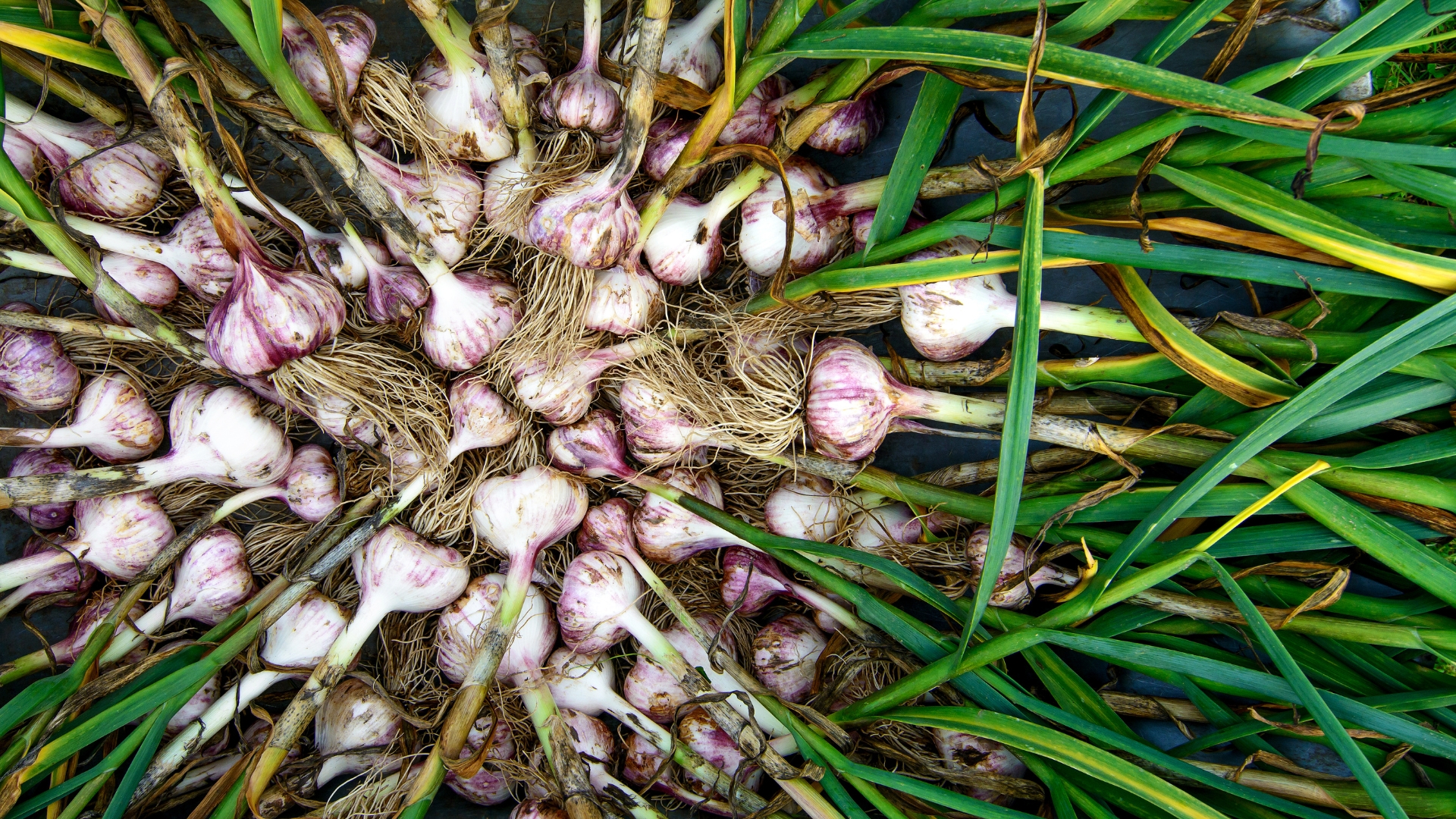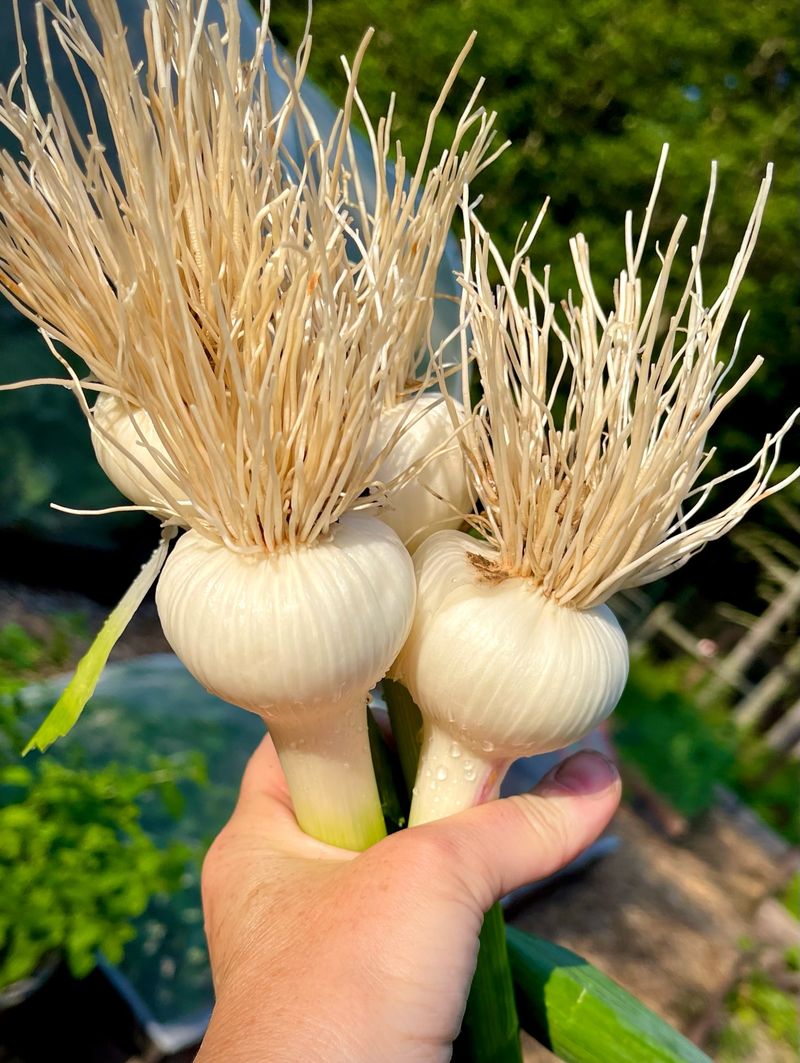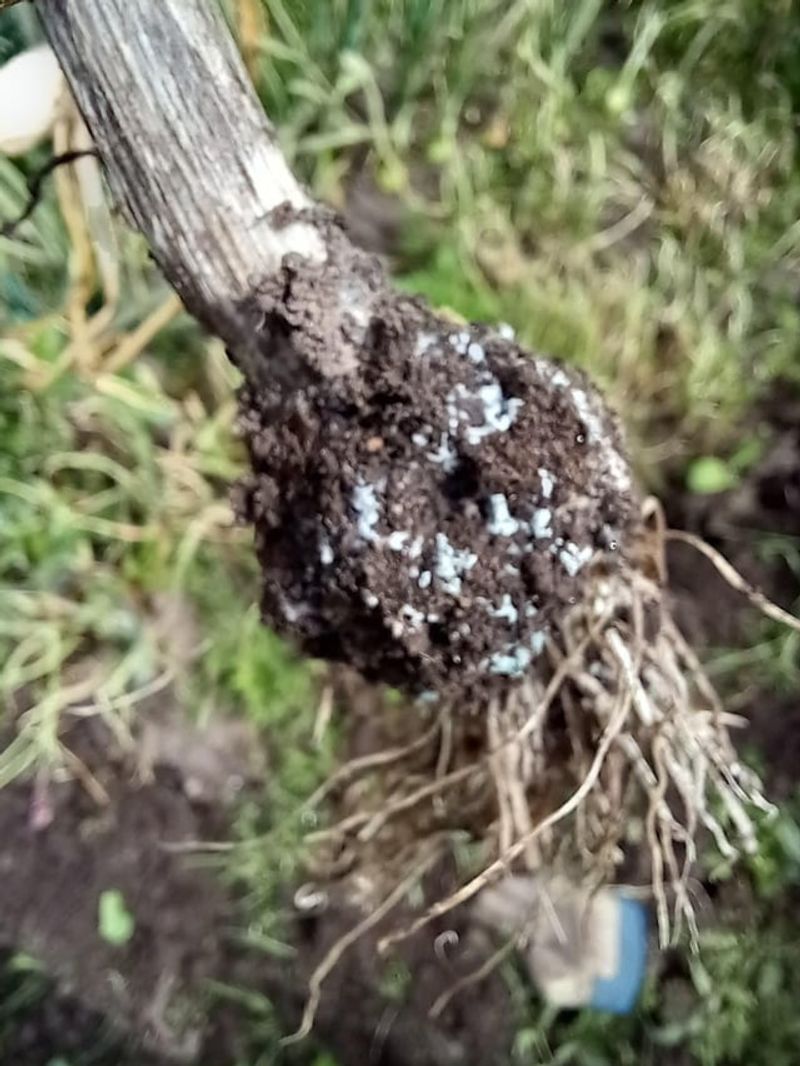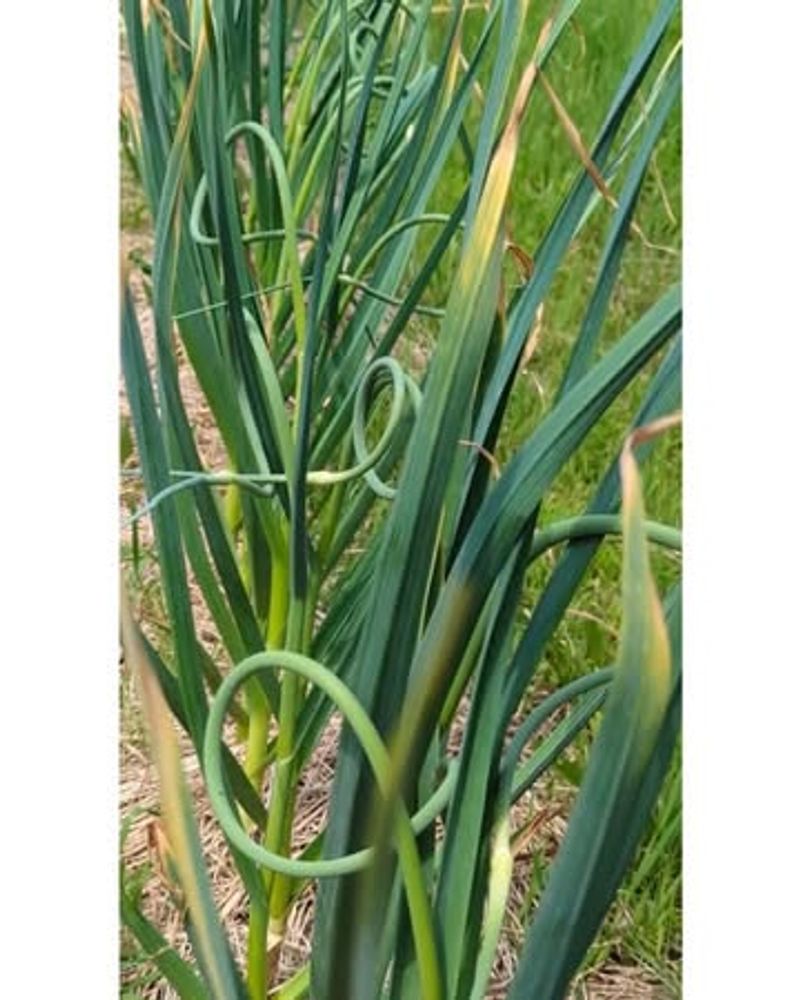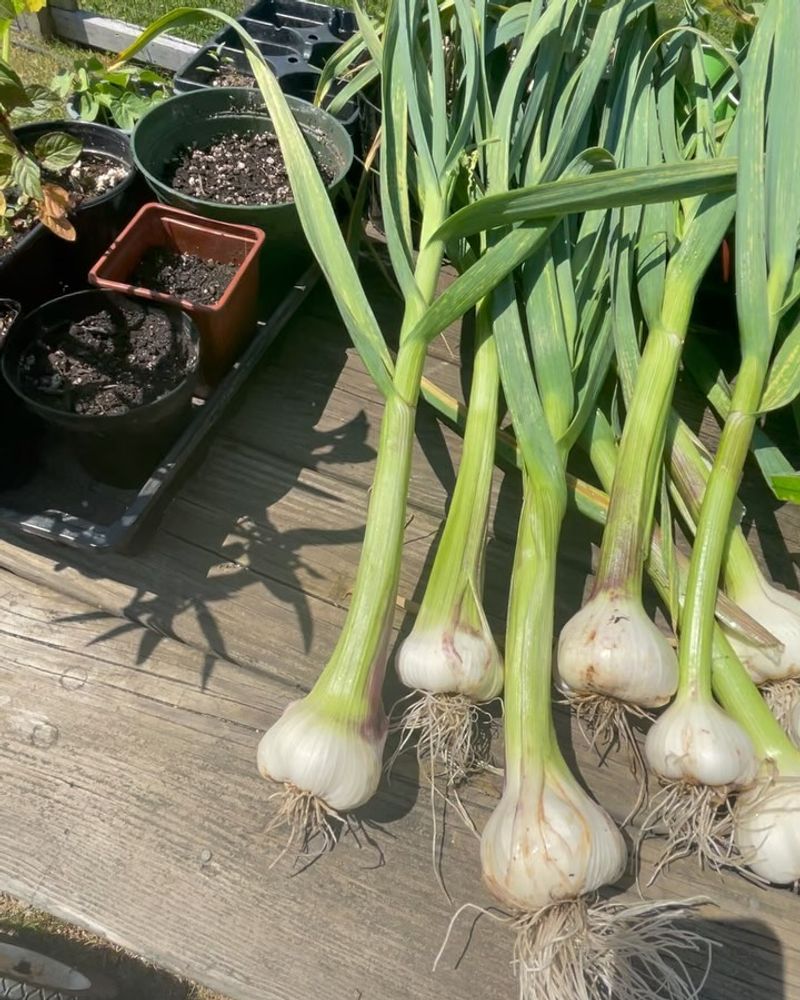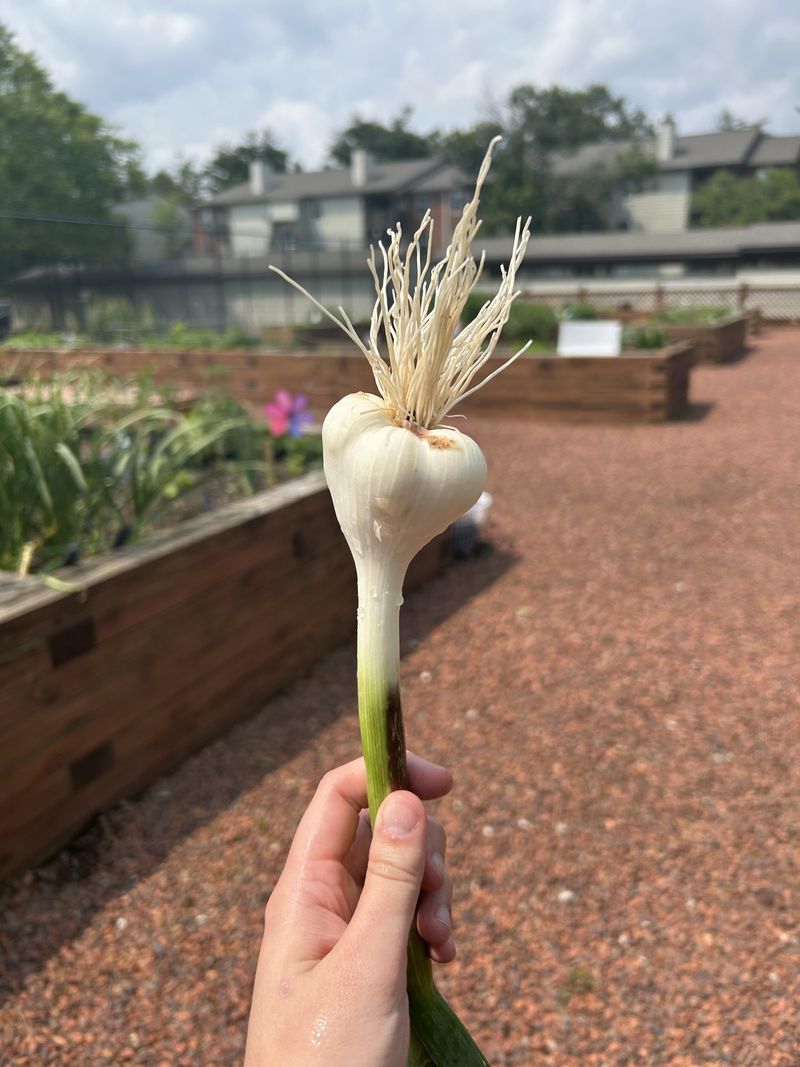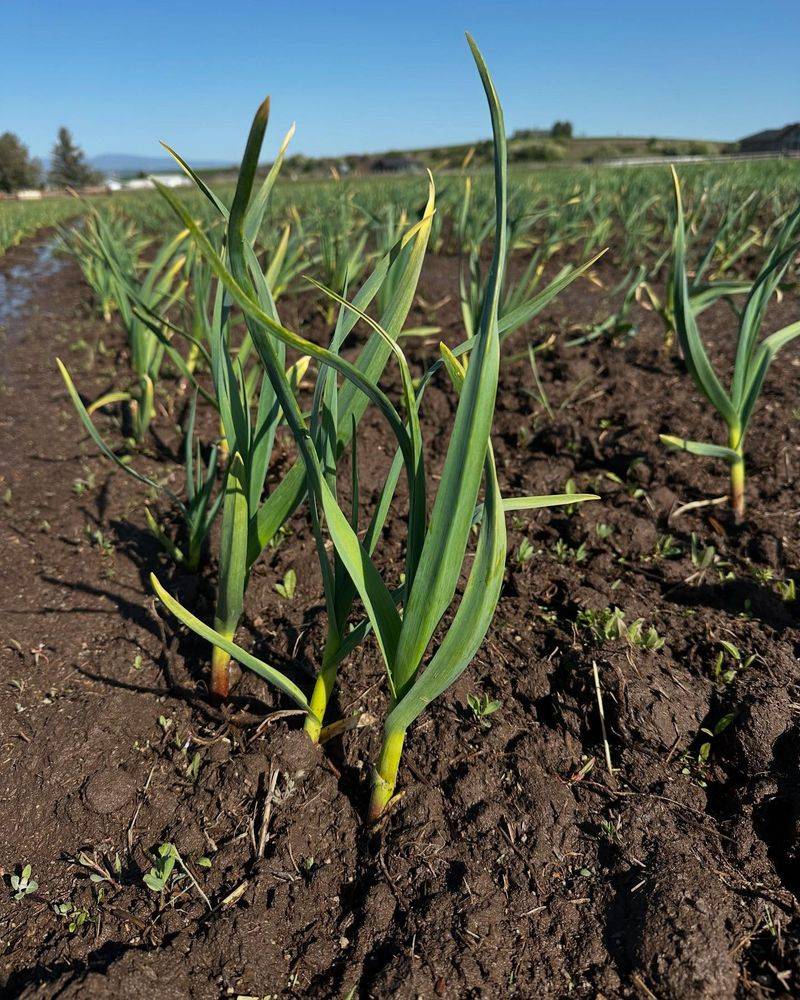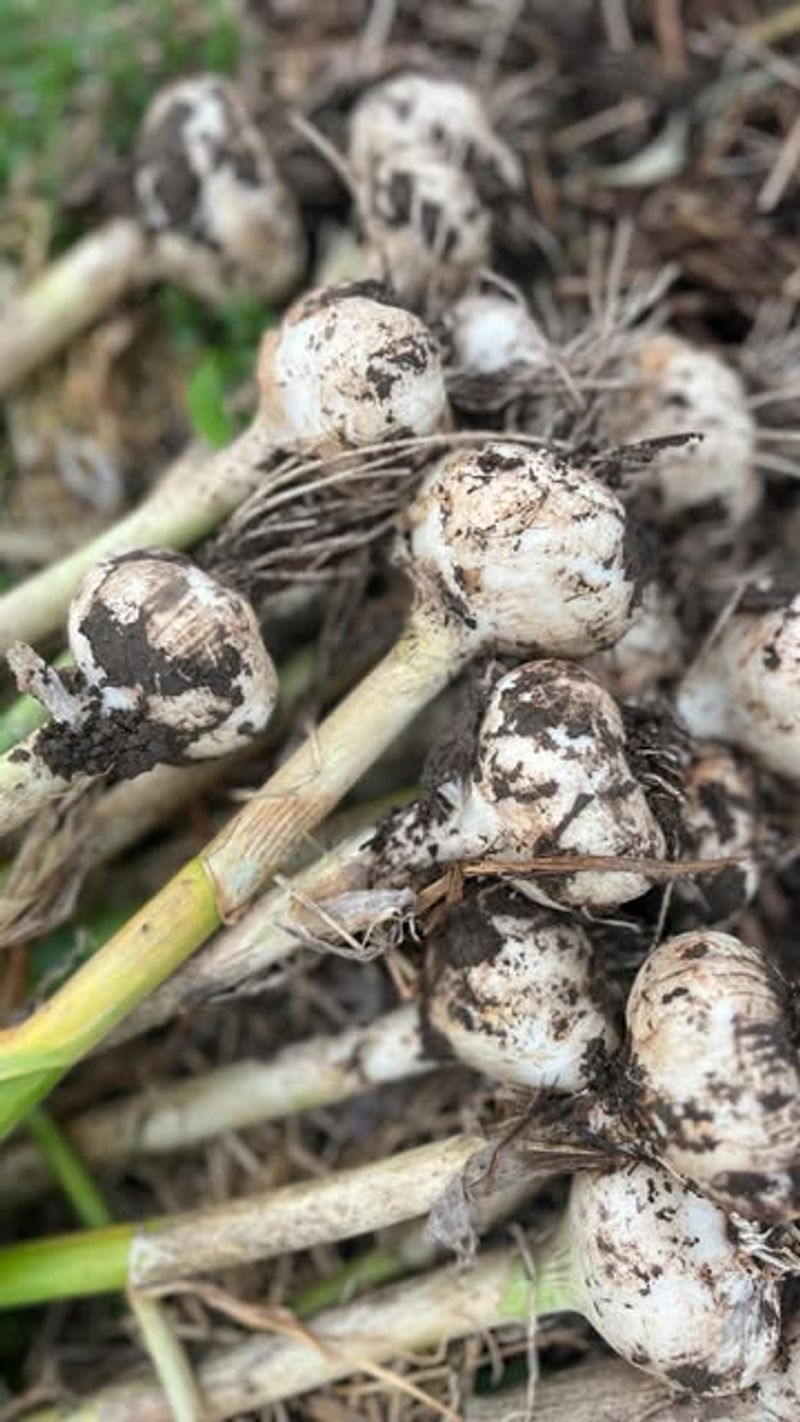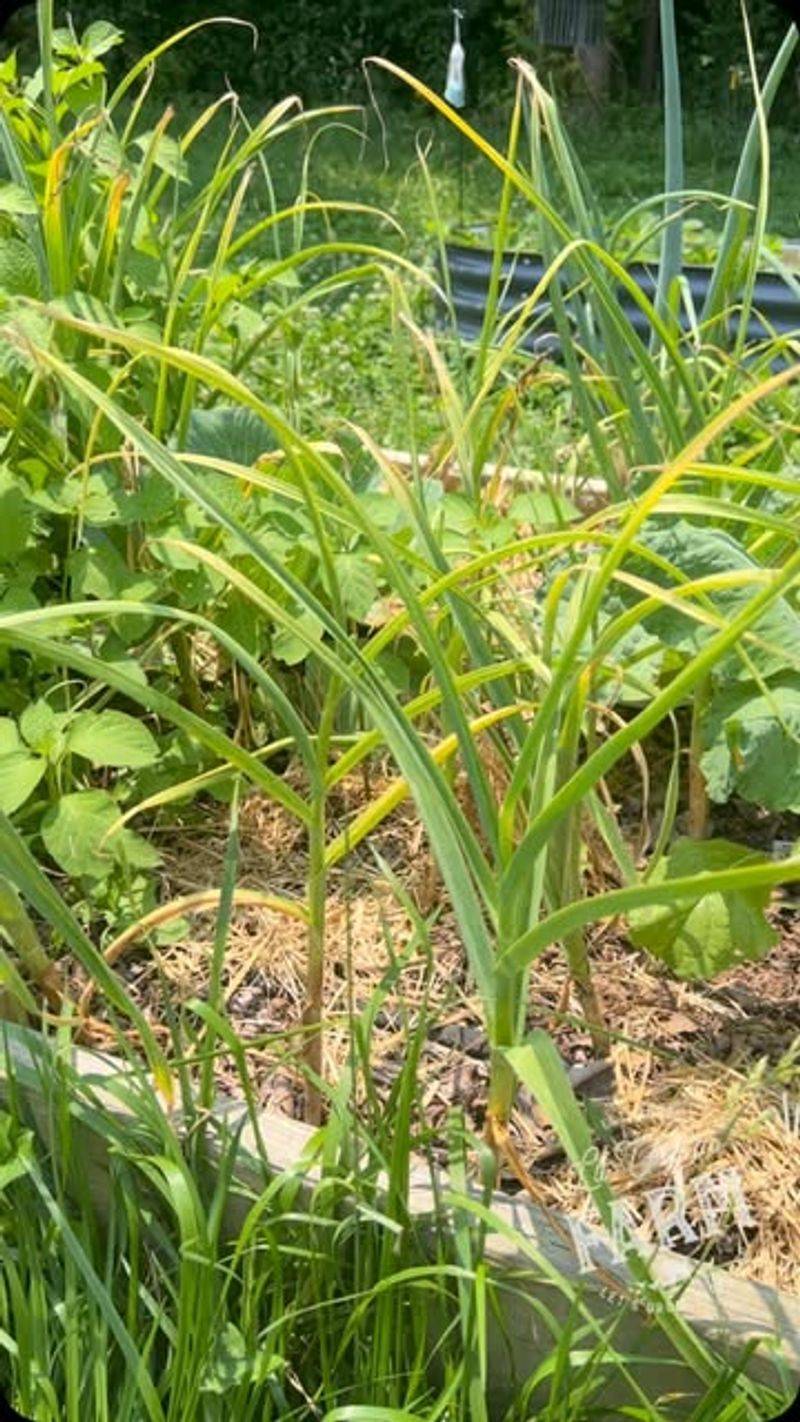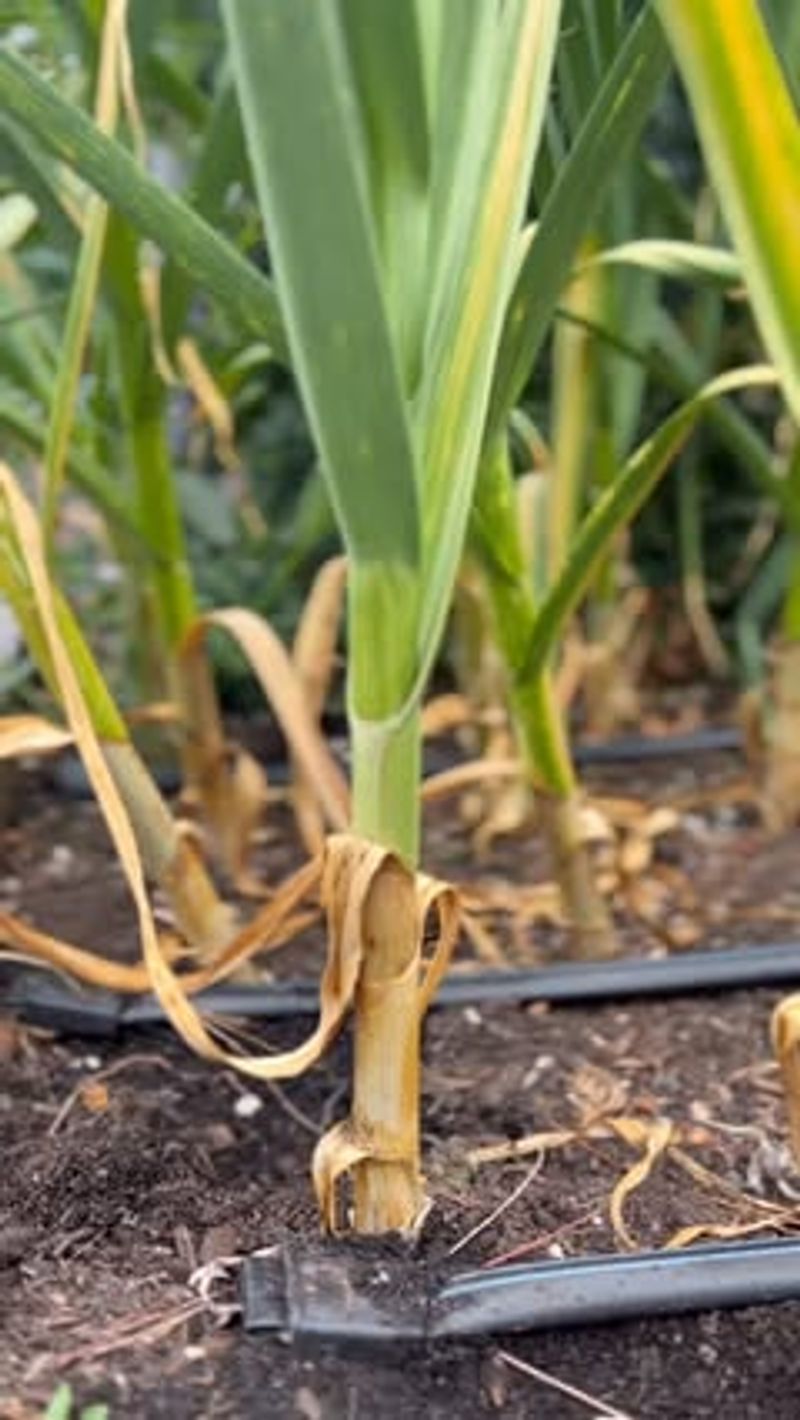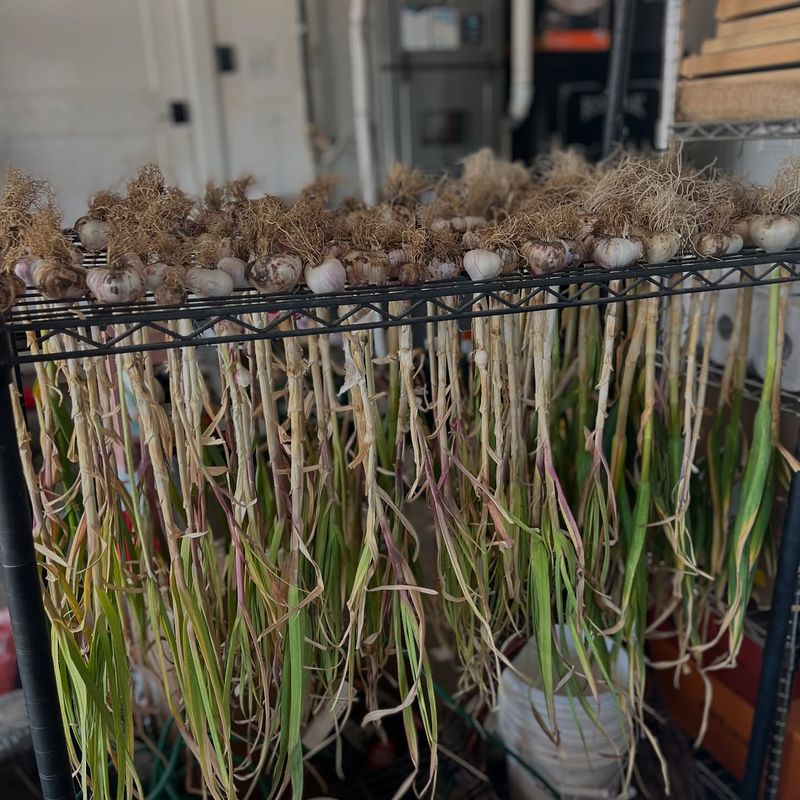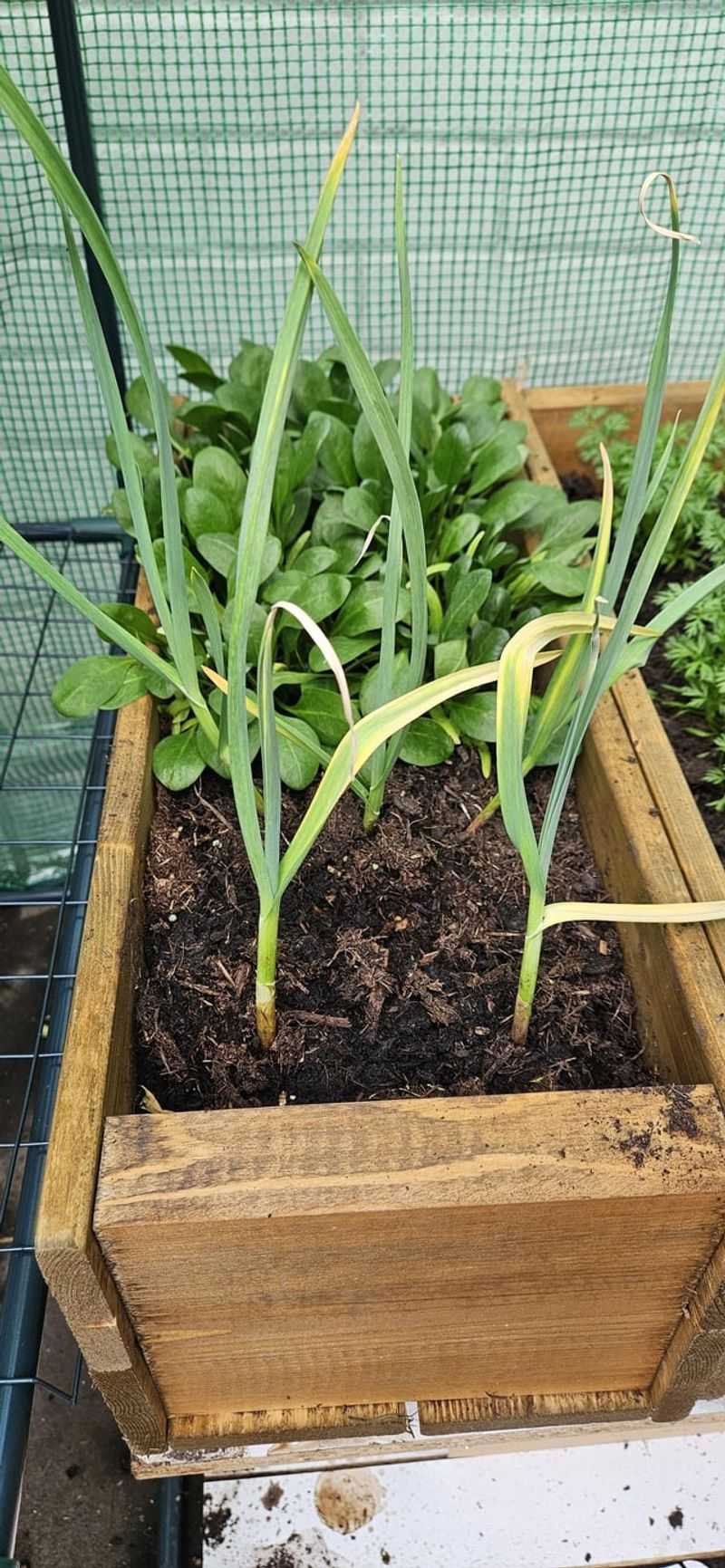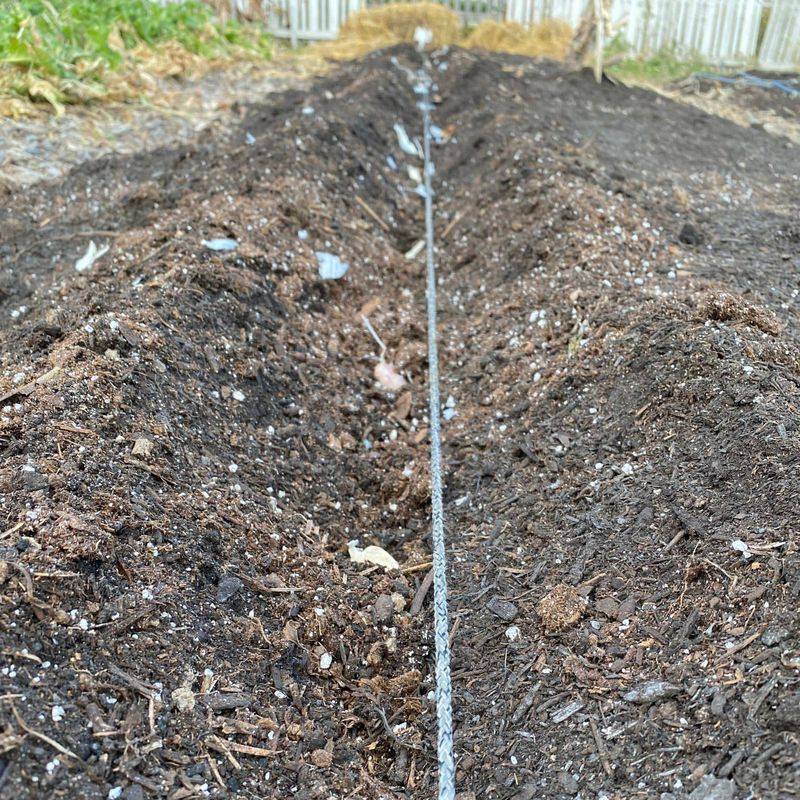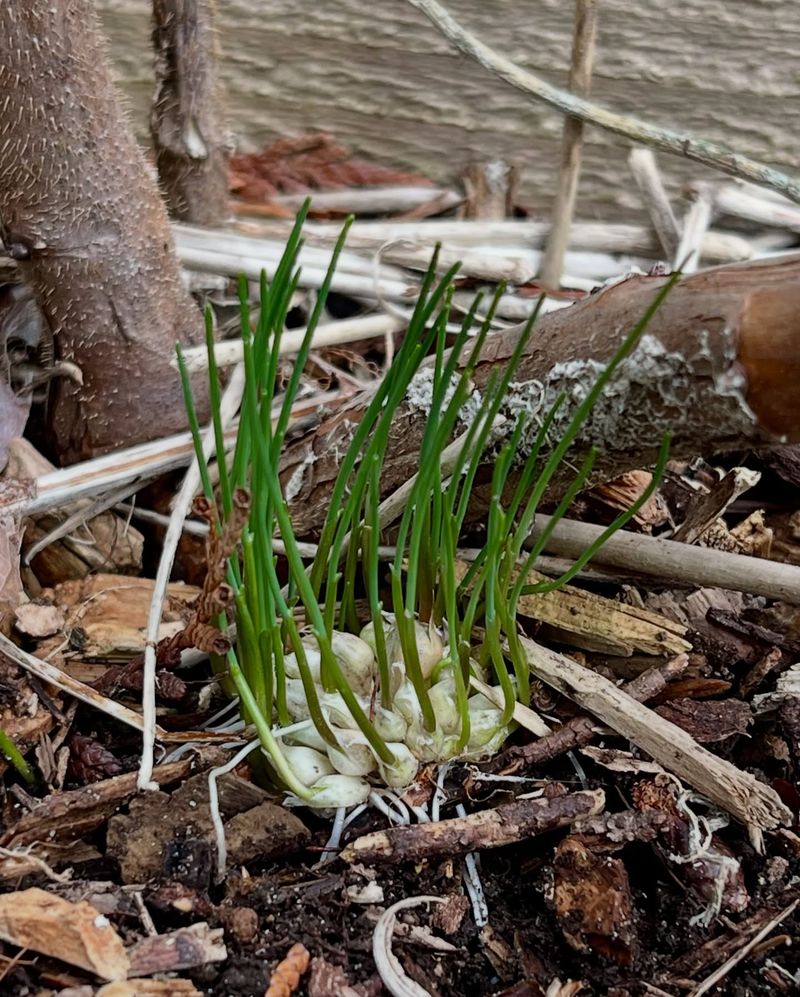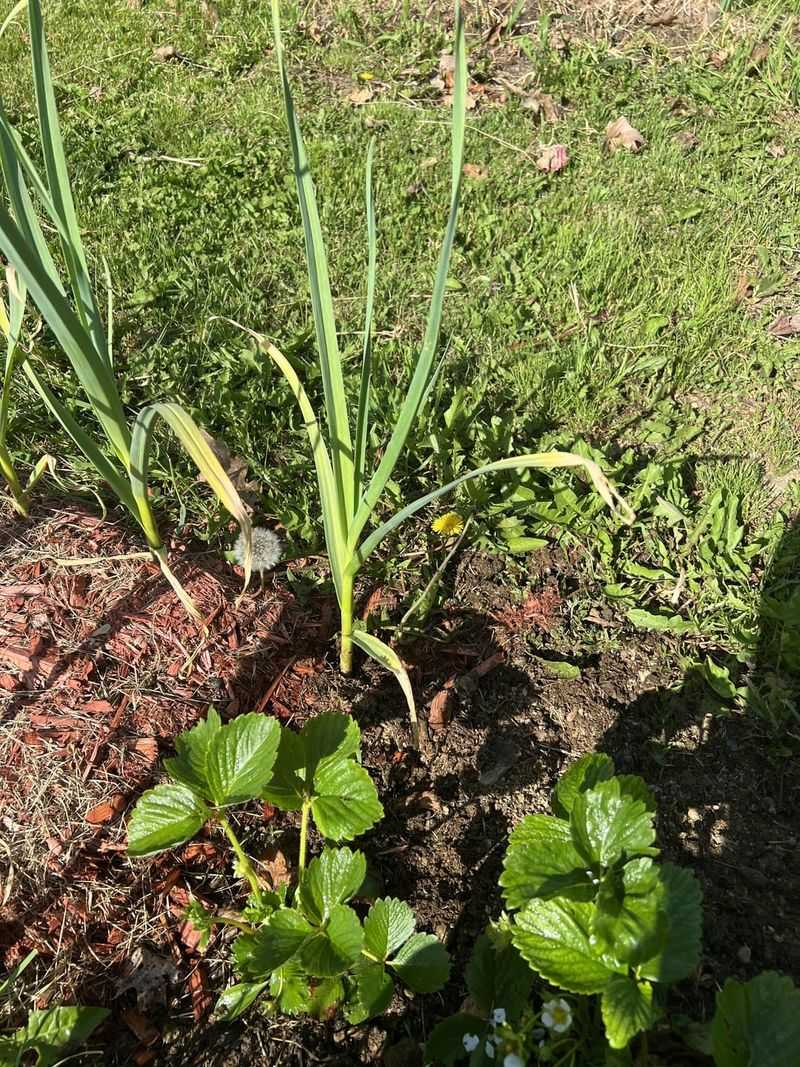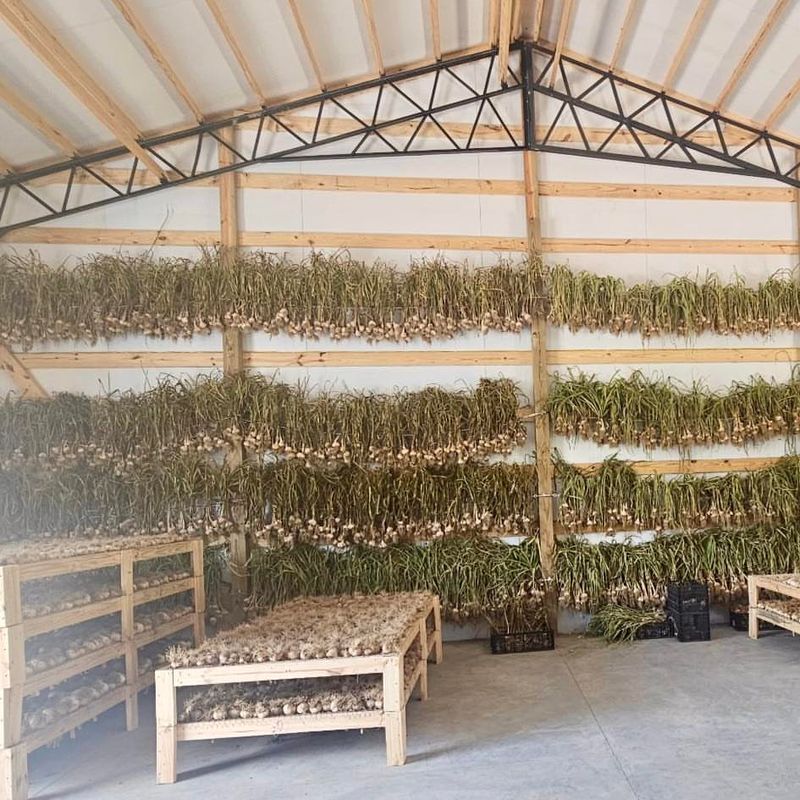By July, garlic is almost ready to shine—but too much water can ruin everything. At this stage, the bulbs are close to maturity, and soggy soil is more enemy than ally. Overwatering can lead to rot, split skins, or weak flavor right before harvest.
If you want big, healthy bulbs that cure well and store even better, now’s the time to back off the hose. These 15 reasons explain why garlic resents water in July—and how to give it the dry-down it needs to finish strong.
1. Bulb Maturation Process
July marks the final maturation stage for most garlic varieties. During this critical period, the plant naturally reduces its water intake as it focuses energy on developing flavorful cloves rather than leafy growth.
Excess water now disrupts this natural process, potentially causing incomplete bulb formation. Your once-promising crop might end up with smaller, less defined cloves that lack the punch you were expecting.
2. Root Rot Risk Spikes
Summer soil temperatures create the perfect breeding ground for fungal pathogens that cause root rot. When you add excessive water to this warm environment, you’re essentially inviting these destructive organisms to a feast.
The garlic’s root system becomes vulnerable as July heat weakens natural defenses. Water sitting around roots for even a day can trigger devastating infections that quickly spread throughout your entire garlic patch.
3. Flavor Concentration Dilution
Ever wonder why some garlic lacks that intense flavor? July watering might be the culprit. The final weeks before harvest are when garlic concentrates its signature sulfur compounds that give it that distinctive kick.
Excess moisture dilutes these compounds, resulting in milder, less complex flavors. Experienced garlic growers deliberately reduce watering now to stress the plants slightly, which triggers stronger flavor development as a survival response.
4. Skin Development Interference
Garlic’s protective papery wrapper forms properly only under specific conditions. July’s combination of heat and dryness signals the plant to develop these crucial protective layers that preserve your harvest for months.
Overwatering disrupts this process, resulting in thin, incomplete wrappers. Without properly formed skins, your garlic becomes susceptible to mold, pests, and rapid deterioration. Many gardeners discover this problem too late when their stored garlic begins rotting prematurely.
5. Splitting Bulb Syndrome
Wild fluctuations between dry conditions and sudden watering in July often lead to split bulbs. The rapid absorption of water causes the cloves to expand faster than the protective outer layers can accommodate.
Once split, these bulbs won’t store properly and become entry points for diseases. Many gardeners mistake this splitting for a positive sign of large bulb development, when it actually indicates inconsistent watering practices that damage your harvest quality.
6. Premature Sprouting Problems
Excessive July moisture tricks garlic into thinking fall has arrived early. This confusion can trigger premature sprouting while bulbs are still in the ground, essentially starting the next growth cycle before you’ve even harvested.
Once sprouting begins, energy redirects from flavor development to new growth. Your storage life drastically shortens, and quality suffers as the garlic’s resources get diverted to these unwanted sprouts instead of completing the current growth cycle properly.
7. Heat-Amplified Fungal Diseases
July’s combination of heat and humidity creates the perfect storm for garlic diseases. White rot, fusarium, and botrytis thrive in these conditions, quickly colonizing plants weakened by improper watering.
The microscopic spores of these fungi spread through water splashing on leaves and soil. What starts as small spots can devastate entire crops within days. Many gardeners mistakenly increase watering when seeing the first signs of disease, inadvertently making the problem worse.
8. Nutrient Leaching Issues
Heavy watering in July’s heat accelerates the leaching of essential nutrients from the soil. Sulfur compounds, crucial for garlic’s flavor development, get washed away particularly quickly in sandy soils.
Without these key nutrients, garlic produces weak, flavorless bulbs. The problem compounds when gardeners notice yellowing leaves and respond by adding more water, creating a cycle that further depletes the soil and stresses plants during their critical final growth stage.
9. Harvesting Complications
Wet soil in July makes harvesting garlic properly nearly impossible. The bulbs become slippery and fragile, increasing the chance of damage during pulling. Broken stems also create entry points for pathogens.
Muddy conditions force many gardeners to delay harvest beyond the optimal window. This waiting game often results in split bulbs and reduced storage quality. Professional garlic farmers specifically plan their watering schedule to ensure soil is appropriately dry for harvest day.
10. Curing Process Disruption
Garlic harvested from wet July soil carries excess moisture into the curing process. This hidden water content extends drying time and often leads to mold formation before the bulbs fully cure.
Properly cured garlic should dry gradually from the inside out. Bulbs from overly watered soil may appear dry on the outside while harboring dampness within. This moisture trap becomes apparent weeks later when your stored garlic unexpectedly develops soft spots and begins to deteriorate.
11. Dormancy Cycle Confusion
Garlic naturally enters dormancy as summer progresses, a crucial biological process that completes its growth cycle. Excessive July watering disrupts these hormonal signals, leaving the plant in a confused state between active growth and dormancy.
This hormonal confusion results in incomplete bulb formation and poor clove differentiation. Many gardeners don’t realize they’re interrupting this vital process when they maintain spring watering schedules into the summer months, ultimately compromising their harvest quality.
12. Soil Temperature Regulation
July’s scorching temperatures can bake soil to damaging levels for garlic roots. While this might tempt you to water more, excess moisture actually prevents the plant from properly regulating its root zone temperature.
Garlic has evolved specific mechanisms to survive heat through controlled transpiration. Overwatering short-circuits these natural cooling systems. Smart gardeners use mulch instead of extra water to moderate soil temperatures, allowing the plant’s natural processes to function properly.
13. Secondary Root Development
Late-stage watering in July can trigger garlic to grow secondary roots rather than focusing energy on bulb completion. These unwanted roots divert resources away from the bulb at exactly the wrong time in the growth cycle.
The plant essentially gets confused about which growth stage it’s in. Experienced growers recognize that the yellowing of lower leaves isn’t a call for more water but a natural signal that the plant is redirecting energy to bulb formation and preparing for dormancy.
14. Companion Plant Conflicts
July marks different water needs among garden companions. While your garlic craves dryness, neighboring plants might demand regular watering, creating a gardening dilemma that stresses your garlic.
The water intended for tomatoes or cucumbers inevitably reaches nearby garlic roots. Smart garden planning means grouping plants with similar July water requirements together. Consider creating separate beds with moisture barriers or significant spacing between plants with conflicting needs.
15. Storage Quality Reduction
The final weeks before harvest directly impact how long your garlic will store. July-watered garlic often develops hidden moisture pockets between cloves that become apparent only during storage, when bulbs begin rotting from the inside out.
Properly water-stressed garlic forms tighter cloves with lower moisture content. This seemingly subtle difference can extend storage life by months. Commercial garlic producers carefully manage July irrigation precisely because they understand this direct connection to market longevity.

